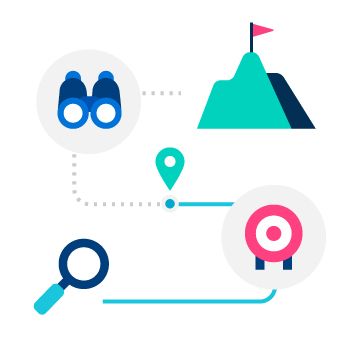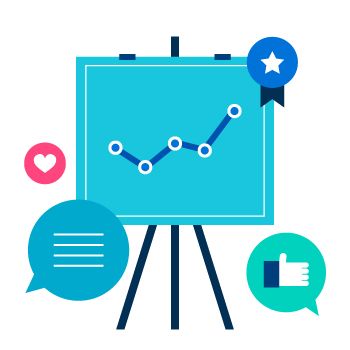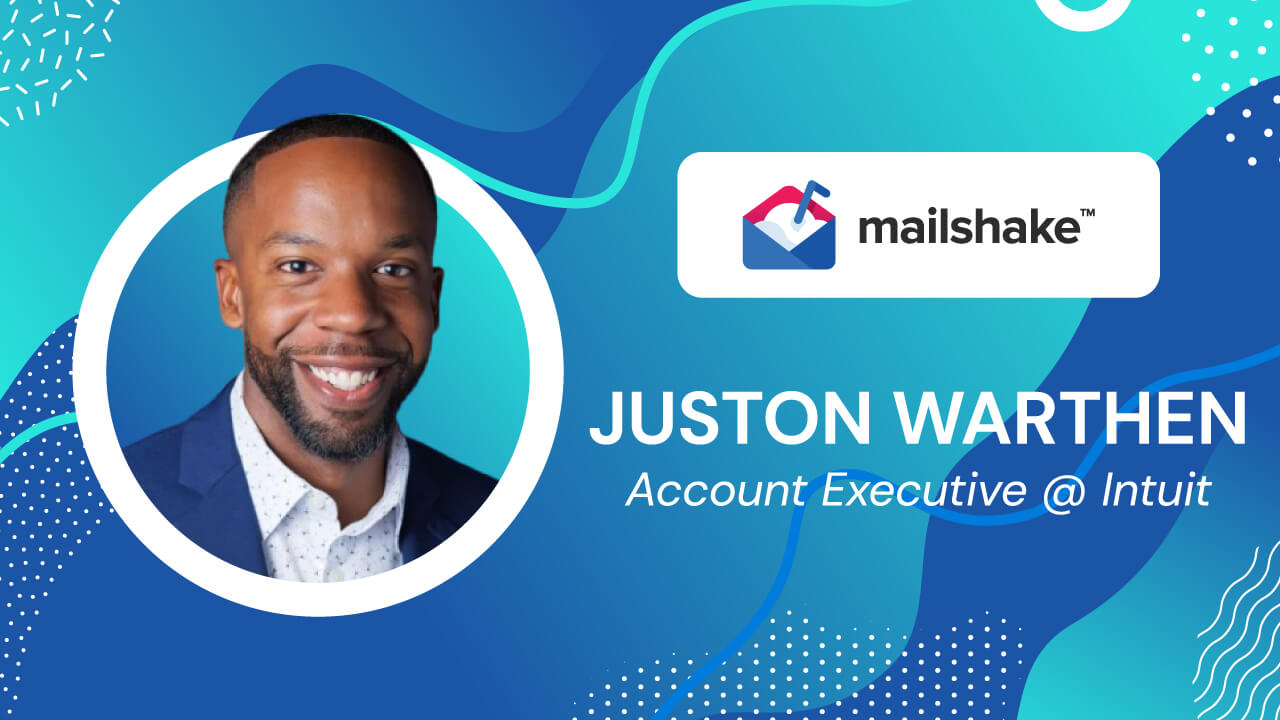10 Tips to Grow Your Client Referrals for 2025

Contents
Client referrals are the number one source of new business for digital agencies – 55% of agencies cite referrals as their top acquisition channel. That’s almost three times higher than the second-biggest source, online advertising.
Of course, referrals shouldn’t be your only channel for winning more clients, but it’s clearly effective. If you don’t have your own referral program, you’re potentially missing out on a significant revenue stream.
Why Companies Aren’t Asking for Referrals
There are numerous reasons companies fail to ask for referrals. Just for starters:
- They think referrals are less effective than other sales channels
- They plan to but haven’t gotten around to implementing a system to ask for them
- It just hasn’t occurred to them to ask
Or, as sales guru Joanne Black states in the podcast “Stop Cold Calling and Get Referrals Instead“:
- They’re scared of rejection
- They don’t want to cheapen their relationships by commoditizing them
- They think referrals should happen naturally
None of these, however, are reasons to avoid asking for referrals.
We already know referred customers stick around longer and spend more than customers acquired by other means. We also know that while rejection sucks, when you do get a “yes,” the odds that lead will convert are pretty damn high.
Basically, there’s no good reason not to be asking for sales referrals.
So what’s the next step? How can you start asking for sales referrals and maximize how many of those referrals you convert into new business?
With that in mind, here are 10 tips to help you generate more referrals for your digital agency.
1. Partner With Brands That Have Similar Clients to Yours
Teaming up with a business that has similar clients to yours, but isn’t a direct competitor, is a great way to generate a consistent volume of referrals.
The idea here is to partner with a company that can’t poach your clients (and vice versa).
For digital agencies, a classic example is to work with a web design or development agency. Or, if you exclusively work in a specific niche, you could team up with another agency that specializes in a completely different industry.
Either way, when one of your partner’s clients needs a service that you offer (and your partner doesn’t), your partner can send them in your direction.
The potential of this approach should be pretty obvious. Say you work with a web dev agency; think about how many websites they build. A lot of those websites will require page copy and optimization.
The client might need help building a backlink profile, which could turn into a whole content marketing campaign. All that work could essentially be handed to you, without you needing to make a single sales call.
So how do you strike up a referral partnership?
One way is to reach out to potential partners and offer your services free of charge. For instance, you might offer a free website audit, or build them an SEO strategy.
This approach will help to showcase your expertise, which in turn makes it more likely that your prospective partner will feel comfortable recommending you to their clients.
2. Give Your Clients a Reason to Shout About You
 To generate referrals, you need to turn your existing clients into evangelists for your brand.
To generate referrals, you need to turn your existing clients into evangelists for your brand.
That means you need to give them a reason to shout about how amazing you are. Unfortunately, it’s rarely enough to just deliver a consistently great service – if you’re going to get people talking, you need to deliver genuinely exceptional customer experiences. These are the kinds of experiences that your clients will feel compelled to share with their network.
In order to create those types of customer experiences, follow these six steps:
- Dig into your customer’s pain points. What is their biggest challenge right now?
- Understand what success looks like to them. Is it an overarching revenue target? Do they want to win X amount of new clients? Or maybe they want to sell a certain volume of a specific product?
- Identify what they need to achieve their goal. What will get them from where they are now to where they want to be?
- Figure out your part in that journey. Which of your services will help your client reach their goals?
- Find ways to exceed expectations. Helping them reach their goal should be your “business as usual.” Now, how can you add more value? Will doing out-of-scope work help them hit target faster, or exceed their minimum goal?
- Do what you said you’d do. Don’t allow those extra services to distract from your primary efforts toward achieving your client’s objective.
Do all those things and you’ll be playing a key role in helping your client hit their target, while also wowing them by proactively offering extra value. That’s definitely something to shout about.
3. Make it Easy for Clients to Refer You
Your clients can be a powerful ally in winning new business, but they aren’t an extension of your sales team. They might be more than happy to send you referrals, but they don’t want to put together a full business case explaining why you’re great at what you do.
It’s your job to help them out. Make it as simple as possible for clients to send referrals your way by providing them with all the collateral they require to show that you’d be a great fit for their contact. Those assets could look like:
- A case study highlighting the results you’ve generated for similar businesses
- An ebook on predictions or trends within their contact’s sector, demonstrating your expertise within and knowledge of that sector
- A how-to guide that talks through a common process or challenge faced by your client’s contact
Another thing on this point: make it clear that all you need from your client is an introduction. You don’t need them to sell your agency for you; once you’ve got a foot in the door, you can take full control of the process.
4. Start a Referral Program
 Launching your own referral program is arguably the most repeatable, scalable way to generate a consistent stream of referrals.
Launching your own referral program is arguably the most repeatable, scalable way to generate a consistent stream of referrals.
While they’re more commonly associated with B2C and product-based businesses, referral schemes can drive amazing results for service businesses, too.
One example of this in action is IT Solutions, Inc, a full-service IT company based in Philadelphia. It offers $1,000 in services to businesses that send new clients its way.
As a further incentive, the referred client also gets $1,000 in IT services, while the referral partner receives a $100 Amazon gift card. This approach saw IT Solutions, Inc. named one of the Inc. 5000 fastest-growing companies for nine successive years.
There are numerous benefits to running a formal referral program:
- It’s simple enough that anyone in your agency can use it without having to ask how it works
- It provides a specific, actionable reason for existing clients to send business your way
- It sets clear expectations upfront, thereby removing any confusion on what your referral partner or new client will receive in return
Of course, for a referral scheme to be successful, the incentive you offer needs to be attractive enough that people want to get involved.
That incentive will vary, depending on the type of businesses you’re trying to evangelize. For instance, existing clients could be offered a set discount on their next month of service. Meanwhile, previous clients could be given a material incentive, such as a dining experience for the whole team.
5. Draw Up a List of Dream Clients
Like every ambitious marketing agency, you likely have a bucket list of clients you’re desperate to work with. Maybe you love their product, or their ethos, or their company culture.
Make a list of your top five dream clients. You could even ask your team to vote for their favorites, then use the results to draw up your bucket list.
Now, reach out to your existing client base and ask if they have any connections within those companies.
While there’s no recent data on this available, the latest survey on LinkedIn connection numbers shows that a majority of members have between 301 and 2,999 first-level connections.
Now, say you have ten clients, and each of those clients has ten team members on LinkedIn. That means you could have access to a potential network of almost 300,000 connections. All you need is for a handful of those connections to work at your dream clients and you’ve got yourself an “in.”
6. Strike While the Iron’s Hot
 Timing is everything when it comes to winning referrals.
Timing is everything when it comes to winning referrals.
Think about it. If you missed your monthly targets at work, you wouldn’t immediately ask your boss for a raise – you’d wait until you had evidence of consistently surpassing your goals.
For this reason, you should never ask a client for a referral if you’re not delivering on your promises to them.
To give yourself the best chance of success, time your referral requests around key customer milestones. Just generated a huge volume of backlinks from your latest content campaign, or helped to smash your client’s seasonal revenue target through high-performing Facebook ads? That’s a great time to ask the question, because they’ll likely be very happy to spread the word about your results.
7. Create a Referral Template
Remember that your clients are busy. They might want to refer you, but they likely have a lot of other priorities. So do all the heavy lifting for them by creating a template referral message for them to send via email or LinkedIn. It should look something like this:
Hi {name of referral},
I’ve been working with {your agency’s name} for a few months now and we’ve seen some fantastic results, like {key result}.
Your company came up in conversation the other day, and it occurred to me that I should connect you.
Here’s {your name, with your LinkedIn profile URL}, my main contact on their side. If you’re happy, they can reach out and see what they can do for you.
Let me know what you think.
8. Follow Up
So you’ve reached out, either by asking a customer for a referral, or to someone a customer has referred to you. A few days have passed, and although things seemed so promising … you’re faced with a wall of silence.
Don’t take it personally. There are a multitude of reasons people don’t reply, particularly when it’s not a cold contact. This silence is more likely due to prioritization or forgetfulness than a lack of interest.
I recommend you follow up in pretty much every sales scenario, but when you’re pursuing the type of warm leads sales referrals produce, failing to follow up is the ultimate error.
Unless you’ve been explicitly told they’re not interested, always follow up.
9. Ask in the Right Way
The right way to ask for a referral primarily depends on who you’re asking. The nature and size of your business are factors as well.
Asking advocates for referrals: In this instance, the ask should be super-personal. If you talk to them often, just bring it up in conversation the next time you speak.
You might say something along the lines of “Hey, I was wondering if you would do me/us a favor … Can you think of anyone who might be interested in our product? Are you able to introduce me?”
If you know a customer is an advocate but you never actually speak to them, send a highly-personalized email instead.
Asking happy customers for referrals: Not every customer who is happy is an advocate, but this doesn’t mean they won’t willingly refer you to someone else.
Again, if you talk to the customer often, just bring it up in conversation. If you don’t, email them.
If you have a large business with a lot of happy customers, you might need to scale this and work from templates, rather than writing a personalized message from scratch. You can streamline this process using a tool like Mailshake, which enables you to send templated yet personalized emails, in addition to tracking open and response rates.
In all instances, it helps to be specific. As Black states in the podcast, you don’t want just “anybody who might be interested.” Instead, ask “Who are one or two people you can introduce me to?”
10. Put the Building Blocks in Place for Nurturing Leads
Black’s podcast outlines the ideal scenario: It’s best to have the person you’re asking for the referral go out, talk about you to someone else, and then point them in your direction.
Unfortunately, things don’t always play out that way.
Just because a customer says they’ll talk to a friend about you doesn’t mean they will. Just because that customer is “really confident” their friend will be interested doesn’t mean they’ll call.
Even if the customer says they’ll handle the introduction, you should still ask for the person’s contact information. This will allow you to contact them directly if need be, and it will give you an opportunity to conduct some quick research on the referral as well.





